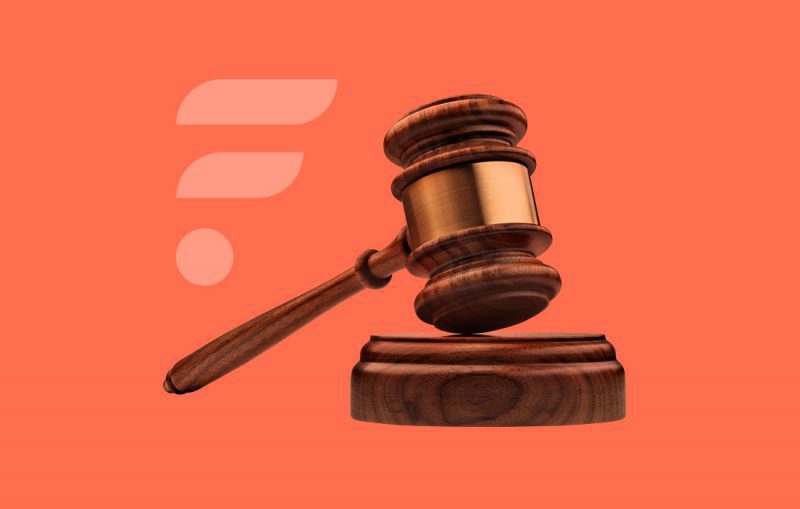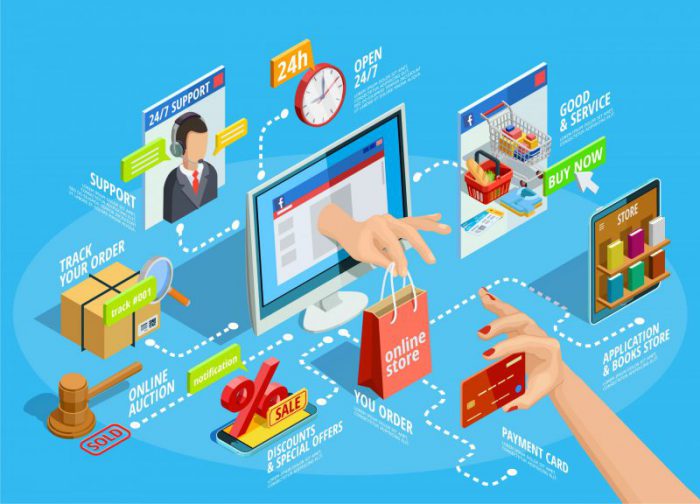
Ecommerce Business on Facebook
How to Promote an Ecommerce Business on Facebook
With over 2 million active users, with more Ecommerce orders being made here than any other social media platform, and with eCommerce businesses achieving an average of 150% ROI, Facebook could be a golden opportunity for your eCommerce business.
Facebook has developed so many features that help brands establish their presence at every stage of the buyer’s journey. From discovery, all the way to purchase. Businesses can drive brand and product awareness to build anticipation for new launches, by reaching the two billion people who use Facebook every single day. You can find more leads and more buyers with effortless sign-up processes, or boost mobile app installations to develop deeper customer relationships. Finally, you can increase purchases, sign-ups and other valuable actions by unifying the entire shopping experience – from online spaces to physical shops. If you are unsure as to how to get started with Facebook, don’t worry. We have compiled a list of strategies and steps you should implement to help increase traffic and conversions. By the end of this blog, you’ll have a seriously strong understanding of just how to promote your eCommerce business on Facebook, so that you can start getting your share of the billions of users the platform entertains.
1. Install Pixel and Conversion Events
To help businesses better understand their customer’s path to purchase so that they can market accordingly, Facebook offers standard event tracking via the Facebook pixel, the Facebook SDK with App Events, and the ability to upload offline conversion data. The Facebook Pixel consists of a small piece of code that should be installed in the HTML of every page on your website. The Facebook SDK consists of a piece of code that should be installed on your app pages. Together, these pieces of code will allow Facebook to track users on your website or app. Standard events are the language that Facebook’s machine learning models understand and use to achieve powerful ad targeting, optimisation, measurement and insights. You determine what standard Pixel events are to be tracked on each page of your site. The options are:
- Add payment info
- Add to basket
- Add to Wishlist
- Complete registration
- Contact
- Customise product
- Donate
- Find location
- Initiate checkout
- Lead
- Purchase
- Schedule
- Search
- Start trial
- Submit application
- Subscribe
- View content
If the event you wish to track isn’t available above, you can create a custom event. Custom events will provide you with insights, but will not measure, optimise or target for you. Therefore, we recommend taking advantage of standard events whenever possible.When you use the Facebook pixel, page views on your website are automatically logged and collected for use in Facebook Analytics, unless you disable automatic event logging.
2. Optimise Your Campaigns for Conversions
When creating a Conversion Campaign (using the Conversion Objective), you will see an option at step 2 regarding Conversion Optimisation.

Powered by the Facebook pixel and App Events, conversion optimisation is the recommended optimisation type for any ad set that has a website conversion goal, such as a form fill or a purchase.With conversion optimisation, Facebook will deliver ads to people in your target audience who are likely to convert upon seeing your ad.They determine the likelihood of the user converting based on historical data from that ad, from that individual and from people with similar characteristics. Holding other factors constant, if it’s more likely that the targeted individual will take the action you’re optimising for, your ad will rank higher in the auction for that individual.
3. Use Dynamic Product Ads
Facebook’s Dynamic Product Ads are an important step to take towards digital ad automation. They achieve far better relevance scores and higher CTRs than ordinary Facebook ads. Not only that, but the use of Dynamic Product Ads is probably the strategy that achieves the highest ROI when it comes to Ecommerce sites attempting to drive more conversions. This happens because you will be automatically tailoring content to the user based on their activities on your website. Personalization doesn’t get any better than this!
Dynamic Product Ads enable you to create templates that will pull relevant images, product names, pricing and other information from your product catalog, based on the activity of your user.
Whether you have a small or large catalog of products, this could be a great solution for your business.
Dynamic Ads allow you to display single or multi product ads to customers who have visited your site, based on products they viewed, added to cart or even purchased.
Here’s a really simple, step-by-step method for setting up your Dynamic Product Ads:
- Upload your product catalog to Facebook Business Manager
- Install the Facebook Pixel on your website
- Create a Dynamic Ad Template. To do so, just choose Product Catalog as your objective and tick Dynamic Ad.
ASOS is one of the world’s fastest-growing online fashion retailers, offering over 75,000 product lines to customers worldwide, by making use of its country-specific websites and mobile apps. The brand has seen up to a 3x increase in sales, reached 35% more people and seen a 2.5x increase in return on ad spend, just by using Dynamic Ads.
ASOS’s growth is fuelled by a laser-sharp focus on acquiring new customers, driving repeat visits and retaining existing customers. Dynamic ads were already an important channel, but ASOS wanted to retarget its rapidly expanding mobile app user base to grow revenues further, and it did so by further employing dynamic product ads.

4. Use Multi-product Ads
This is a very simple but very useful feature, as it provides you with the ability to show off multiple products in a single ad.
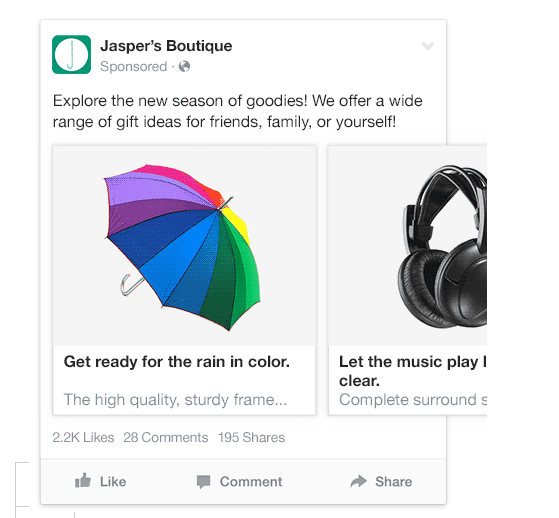
Multi-product ads can give your customers more options to choose from. It helps you increase conversions, as you are essentially increasing the odds of a user seeing a product that is relevant to them. In doing this, you are making it more likely that a user is going to buy from you; they are more likely to see the product they want on a multi-product ad.
Another interesting use of multi-product, or carousel, ads are in showing different benefits or aspects of a single product. Like Tieks did here:
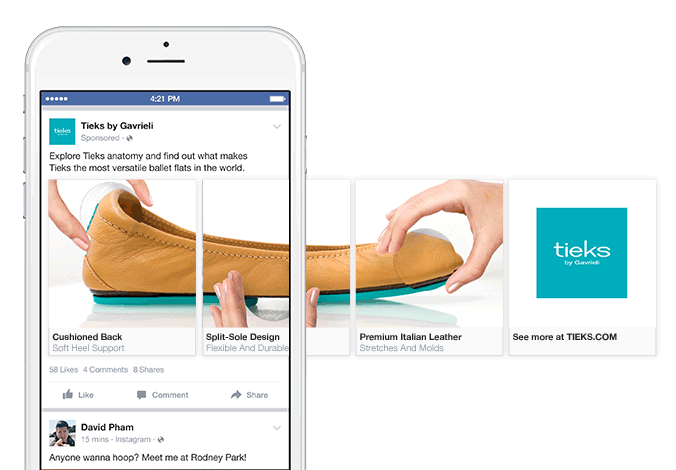
Adobe, the American multinational computer software company, discovered that through their use of multi-product ads, they experienced a 50% to 300% increase in CTR, up to a 35% reduction in cost per click as a result of higher engagement, and finally, a more efficient cost per acquisition.
5. Run General Retargeting Campaigns
The average proportion of online shoppers that abandon their carts on ecommerce sites without completing a purchase is a surprising 72%. Therefore, without retargeting, only 18% of your prospective customers will actually purchase. Businesses can’t afford to base their marketing strategy on this conversion rate.
With retargeting, however, the average e-commerce website can influence 26% of the users who abandoned their carts to complete a purchase. Now we are talking about a 44% conversion rate for your business, which is far more lucrative.
According to Wishpond, the source of the data above, web visitors who are retargeted with display ads are 70% more likely to convert to your website.
I don’t think we need to stress any more that not retargeting your website visitors costs you both conversions and potential sales!
Dynamic Ads, in general, are pretty much the same as retargeting ads. But, you can do far more with generic ads: retargeting prospective customers that visited your site 30 days ago, or even up to 180 days ago, retargeting mere visitors, add to cart users, add payment method users, and so on. The sky is the limit here. Just be careful not to overlap your general retargeting campaign with your dynamic ads campaigns.
6. Find New Customers with Lookalike Audiences
Lookalike Audiences allow you to easily reach new people who are extremely likely to be interested in your business. Why? Because they are virtually identical to your most valuable existing customers! Facebook will look at the common qualities of the people in a ‘source audience’ (for example, your website visitors), such as demographics and interests, and then find people who most “look like” that source audience. You can choose the size of a Lookalike Audience during the creation process. Smaller audiences are more closely matched to your source audience. Larger audiences give you a higher potential reach, but it reduces the level of similarity between your source audience and the new audience you are about to create.
We generally recommend a source audience of between 1,000 and 50,000 people. Source quality matters too, by which we mean that is always better to use a high-quality conversion audience as the source, as opposed to a more generic one. For example, use your customer list as the source, instead of all website visitors.

We have compiled some additional information for you to consider when creating a Lookalike audience.
Your LAL Audience will only include people from the country or region you select.
Your source audience must have at least 100 people from one country, so Facebook can map up their similarities.
Facebook allows you to create up to 500 LAL Audiences from a single source audience.
Whoever is on your source list will be excluded from the LAL Audience, unless you use your pixel as your source.
You can use more than one LAL Audience for a single ad set.
7. Get Shoppers to Come into Your Store
Retail has always been about reaching the right customer at the right time, with the right product. The customer’s path to purchase, however, has become quite complex with the introduction of the digital age.
To help retailers, Facebook created the Store Traffic objective. This enabled advertisers to create customised ads with the location of their store and deliver them to people that were nearby, increasing foot traffic and boosting sales.
The Store Traffic objective is available for any business that has a physical shop, whether is a retailer, restaurant, or dealership. You can use this objective to reach people within a set distance of the location or locations that you set, to help them find or contact the store closest to them.
For example, let’s say you have a few physical shops and want to reach people who live or work near each one. You can use the Store Traffic objective to create ads with localised content for each of your locations, designed to encourage local foot traffic through shop locators and call-to-action buttons such as ‘Get Directions’ or ‘Call Now’. You can also use flexible location targeting to determine the area around each of your shops that you want to reach.

Note: If you only want to increase foot traffic to a single physical location, use the Reach objective instead, and target people around your location.
8. Showcasing Testimonials
Social proof is essential to social media marketing, but not every advertiser understand this. In the digital world we live in, it has become more critical than ever when it comes to winning over customers with social ads.
Digital users have adapted the habit of checking reviews and testimonials as proof of quality and authenticity in businesses, services, or products in general.
So, if your brand has user-generated content, like influences, photos, video or product reviews, putting this information into a carousel ad can add a level of trust to your message and product.
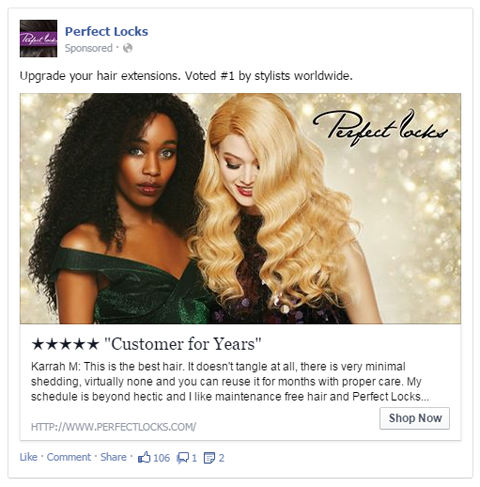
Final Thoughts
It has been proven that Facebook ads can help you grow your business – and quick! – if you know how to use all the features the platform provides. Put some of these strategies into practice. Play around and experiment with various ad types and formats, different forms of targeting and ad placements.
Once you’ve found the winning formula, you will see your business grow exponentially as you take advantage of the unbelievable benefits of Facebook as an advertising platform.
Try Demo – Filed, Marketing Software
Follow us on Instagram for blog updates – Instagram, Filed AI



